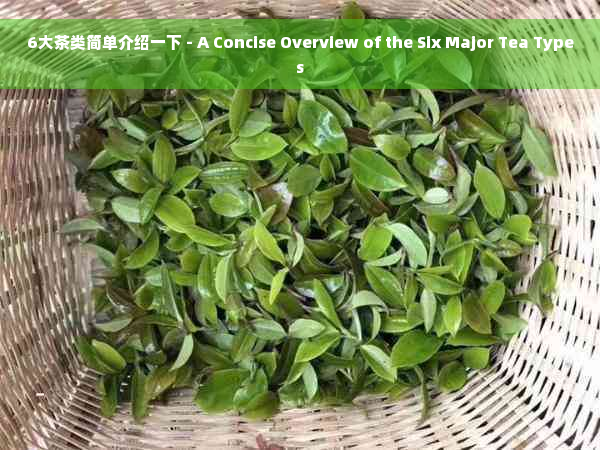Tea, a beverage cherished across cultures and generations, has a rich history and an equally diverse array of types. Its origins can be traced back to ancient China, where it has been cultivated, processed, and consumed for thousands of years. From the lush tea gardens of the east to the bustling teahouses of the west, the allure of tea is undeniable. This concise overview ms to provide an insight into the six major tea types, each with its unique characteristics, flavor profiles, and cultural significance.

### Introduction to the Six Major Tea Types
Tea, a simple drink with profound complexity, is categorized into six major types based on the level of oxidation the leaves undergo during processing. These types include white, green, yellow, oolong, black, and dark (pu-erh) tea. Each type offers a unique taste experience and has its own set of health benefits. Let's delve into each of these teas to understand their distinct properties.
### White Tea - The Pure Elixir
White tea is the least processed of all tea types, consisting mnly of the buds and young leaves of the tea plant. It undergoes minimal oxidation, preserving the natural flavor and delicate aroma of the leaves. The color of the brew ranges from pale yellow to light golden, and the taste is smooth and subtle, often described as sweet and delicate. White tea is known for its high antioxidant content and is believed to have anti-aging properties.
### Green Tea - The Fresh Essence
Green tea is made from leaves that are steamed or pan-fried shortly after harvesting to prevent oxidation. This process helps to retn the green color and fresh flavor of the leaves. The taste of green tea can range from grassy to earthy, depending on the specific variety and processing method. Green tea is rich in polyphenols, which are believed to have various health benefits, including reducing the risk of heart disease and certn cancers.
### Yellow Tea - The Rare Treasure
Yellow tea is a less common type of tea, primarily produced in China. The leaves are allowed to oxidize slightly more than white tea but less than green tea, resulting in a unique yellow color. The flavor is smooth and mellow, with a hint of sweetness. Yellow tea is known for its digestive properties and is often consumed after heavy meals.
### Oolong Tea - The Dynamic Dance
Oolong tea is partially oxidized, falling somewhere between green and black tea in terms of processing. The leaves are rolled and twisted, which results in a complex flavor profile that can range from floral to fruity to roasted, depending on the level of oxidation. Oolong tea is known for its ability to d in digestion and weight loss, and its vibrant color and aroma make it a favorite among tea enthusiasts.
### Black Tea - The Classic Brew
Black tea is fully oxidized, which gives it a dark color and rich flavor. It is the most common type of tea consumed in the Western world and is often used in blends like Earl Grey and English breakfast. The flavor can vary from malty to spicy to sweet, depending on the region of origin and processing method. Black tea is known for its invigorating properties and is often consumed with milk and sugar.
### Dark Tea - The Earthy Elixir
Dark tea, also known as pu-erh, is a type of post-fermented tea that undergoes a unique aging process. The leaves are pressed into cakes or bricks and then stored for several years, allowing them to ferment. The flavor is earthy and deep, with a hint of mushroom or forest floor. Dark tea is believed to d in digestion and lower cholesterol, making it a popular choice for those interested in its health benefits.
In conclusion, the six major tea types offer a world of flavors and health benefits. Whether you prefer the delicate taste of white tea or the robust flavor of black tea, each type has something unique to offer. By understanding the characteristics of each tea type, you can make informed choices and enjoy the rich tapestry of tea traditions from around the world.
